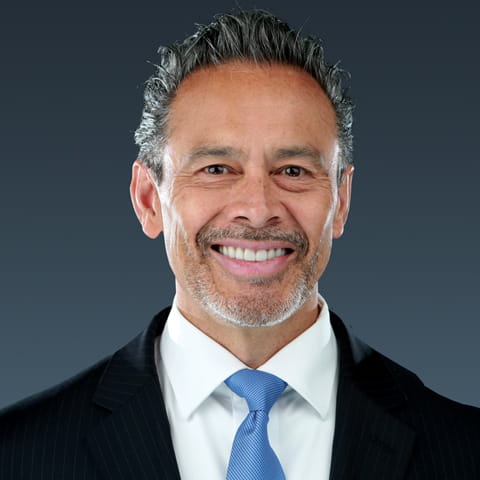Our solutions are tailored to each client’s strategic business drivers, technologies, corporate structure, and culture.
Investing in oversight: The value of a third-party integrity monitor
Real-time oversight can play a critical role in improving accountability and preventing corruption.
Corruption does not need an invitation, just an environment where oversight is weak or nonexistent, enforcement is inconsistent or absent, and accountability is optional. While some may see oversight as a bureaucratic formality, it is an essential safeguard against fraud, waste, and abuse. Having spent many years as an inspector general before transitioning into the private sector and integrity monitoring, I have seen the need for oversight from both the public and private sector perspectives. Especially in public sector infrastructure projects, where billions of taxpayer dollars are at stake, the absence of rigorous oversight creates an environment that is fraught with risk and where fraud, waste and abuse can thrive.
Large infrastructure projects – such as highways, airports, transit systems, and energy grids – represent some of the most significant public expenditures in any government’s budget. These projects are expensive and extraordinarily complex, involving multiple contractors, subcontractors, and regulatory agencies. This complexity creates opportunities for bad actors to manipulate contracts, inflate costs or cut corners, and deliver substandard work.
Far-reaching consequences
The consequences of poor oversight are well documented. Throughout history, there are plenty of examples of infrastructure projects plagued by major cost overruns, kickbacks, pass-through schemes, and other types of outright fraud. From projects that have used subpar materials to ghost employees siphoning money from government contracts, the absence of strong oversight can transform ambitious projects into financial disasters plagued by fraud, waste, and abuse.
Unchecked corruption in infrastructure projects creates a ripple effect of consequences beyond just wasted money. It delays critical projects, erodes taxpayer confidence, and weakens public faith in government institutions. When fraud, waste, and abuse are ignored or go unpunished, it signals that wrongdoing is tolerated.
Ideally, effective oversight is not just about catching wrongdoing after the fact; it is about preventing it from happening in the first place. Strong, proactive oversight mechanisms – whether in the form of inspectors general, integrity monitors, independent audits, or compliance reviews – act as deterrents to fraud, waste, and abuse. These mechanisms confirm that taxpayer funds are spent wisely, contracts are awarded fairly, and contractors are held to high standards.
The value of integrity monitors
Real-time oversight can play a critical role in mandating accountability and preventing corruption. An integrity monitor is an independent, third-party “watchdog” that can assist in oversight of large-scale projects that present an elevated risk for fraud and mismanagement. Integrity monitors work proactively beside project teams to quickly identify compliance issues, safety concerns, regulatory violations, and inefficiencies, as well as recommend corrective actions before they result in legal or financial liabilities. This real-time, boots-on-the-ground oversight allows for immediate corrective action when risks arise.
Depending on the project’s scope and complexity, a monitor can be engaged to oversee the entire project or focus on a specific aspect where heightened oversight is necessary due to elevated risks. Often, this determination is based on a risk assessment (which the integrity monitor can conduct) that identifies potential vulnerabilities, such as financial mismanagement, procurement fraud, regulatory noncompliance, or safety concerns. By evaluating these risks, stakeholders can strategically deploy an integrity monitor to monitor high-risk activities, enforce compliance, and assist in implementing corrective measures.
The use of an integrity monitor under these circumstances does not, and should not, signal that wrongdoing has been committed. Rather, it is a proactive measure to prevent wrongdoing from happening. Whether providing comprehensive oversight or addressing targeted risks, an integrity monitor plays a vital role in ensuring accountability and protecting tax dollars.
Cost considerations
The cost of engaging an integrity monitor is usually a small investment compared to the value brought to the project to promote accountability, fraud prevention, and savings. An integrity monitor’s fee is generally based on the project’s complexity, staffing needs and specializations, duration, and risk factors. A common pricing model is a fixed fee for the project, which provides a level of budget certainty for the stakeholders. Whether based on a fixed-fee pricing model or an alternative flexible pricing structure, selecting the appropriate pricing for the project allows for predictability of oversight costs and flexibility to adjust oversight levels as needed.
For both government entities and stakeholders, integrity monitoring should be seen as a strategic investment in project integrity and efficiency. Infrastructure projects are critical to economic growth, but their success depends on strong oversight, accountability, and risk management.
An integral part of the solution
Oversight is often a major factor in making sure an organization’s culture values and promotes integrity. It promotes transparency, allowing taxpayers to see how their money is spent. Open procurement processes, public reporting requirements, and citizen engagement all serve as additional layers of accountability, making it harder for corruption to take root and fester. Investing in oversight mechanisms – whether by funding and supporting the mission of an inspector general in government or hiring an integrity monitor on a large project – is never a waste. It is, very simply, good management.
Without transparency and accountability, corruption will take hold and public trust will erode, resources may be diverted from essential services and the very purpose of public investment in communities will be undermined. For nearly all organizations, particularly those in the public sector, fostering a culture of transparency and integrity is crucial to building public trust, ensuring efficiency, and preventing corruption. Integrity monitors are one more tool in the regulatory toolbox to accomplish this goal.
Contact
Let’s start a conversation about your company’s strategic goals and vision for the future.
Please fill all required fields*
Please verify your information and check to see if all require fields have been filled in.
Related services
This has been prepared for information purposes and general guidance only and does not constitute legal or professional advice. You should not act upon the information contained in this publication without obtaining specific professional advice. No representation or warranty (express or implied) is made as to the accuracy or completeness of the information contained in this publication, and CohnReznick, its partners, employees and agents accept no liability, and disclaim all responsibility, for the consequences of you or anyone else acting, or refraining to act, in reliance on the information contained in this publication or for any decision based on it.















